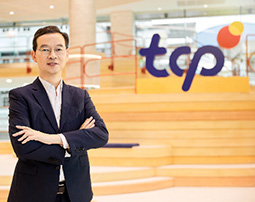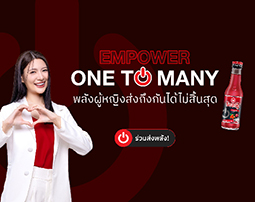TCP Spirit Unveils the Link Between the “Ecosystem” and “Circular Economy” Lessons Learned from the Forest Contributing to Universal Actions for a Sustainable World
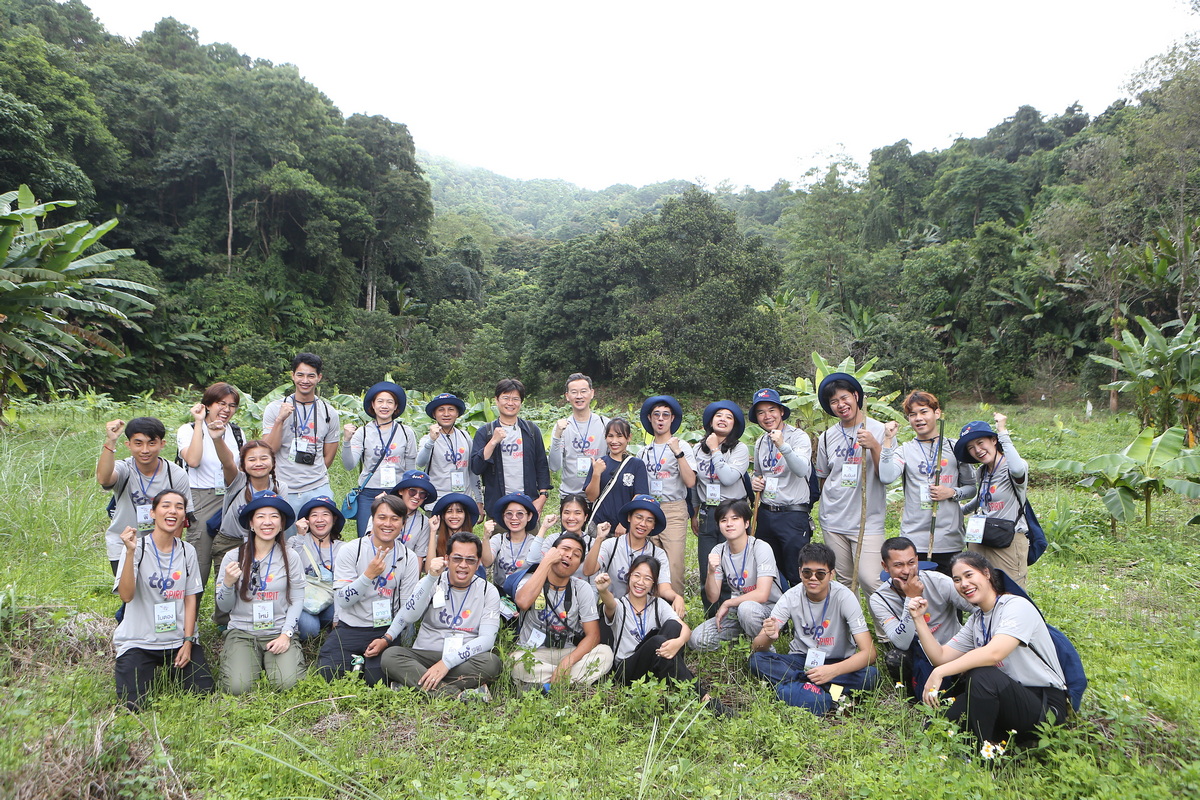

Global warming is continuously intensifying, ushering us into the early stages of a “global boiling” phenomenon that causes biodiversity loss. In response, the business sector, recognizing the significance of driving nature positive or positive impacts on the environment, has incorporated this issue as a primary goal for organizations. This includes TCP Group, which is committed to conducting its business operations while actively fostering a positive impact on the environment and promoting sustainable coexistence through tangible actions. This commitment aligns with the concept of the circular economy, which seeks to restore natural capital to the world, saving our planet from crises.
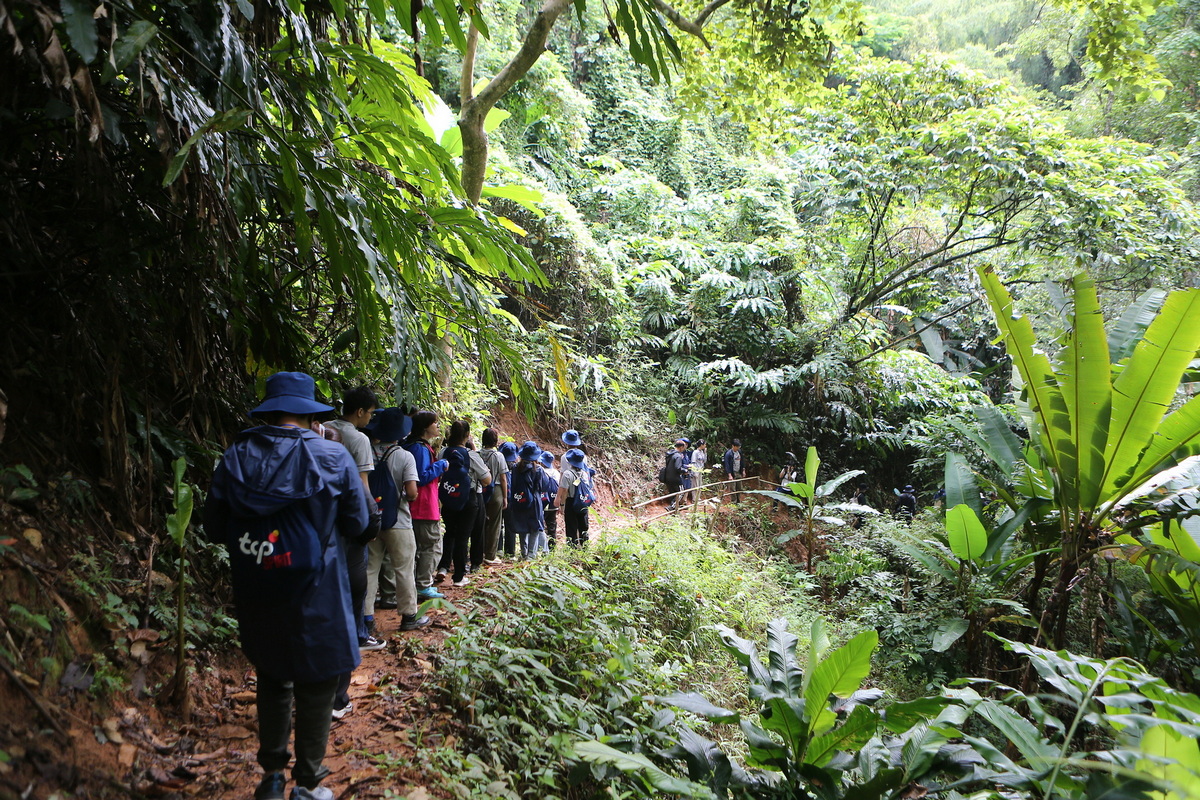
One of TCP Group’s initiatives to drive society towards sustainability is by energizing the new generation to be volunteers participating in the TCP Spirit project, offering them hands-on opportunities. This year's event was held under the theme Kana Sed Sarng (Faculty of Waste to Value) Year 2 and titled “Aew Nuea Keun Doi Tamroi Vidhi Rai Kaya” (A Journey to the North: Up on the Mountain to Follow the Path of Zero Waste). This initiative aligns perfectly with TCP Group’s sustainability strategy, which centers on advancing the circular economy. A team of volunteers was led to the Doi Tung Development Project, renowned as a model for sustainable development. The primary objectives were to delve deeply into waste management, unlock the secrets of the forest, and establish a comprehensive understanding of the connection between ecosystems and the circular economy. The ultimate goal was to inspire tangible actions that contribute to a sustainable world.
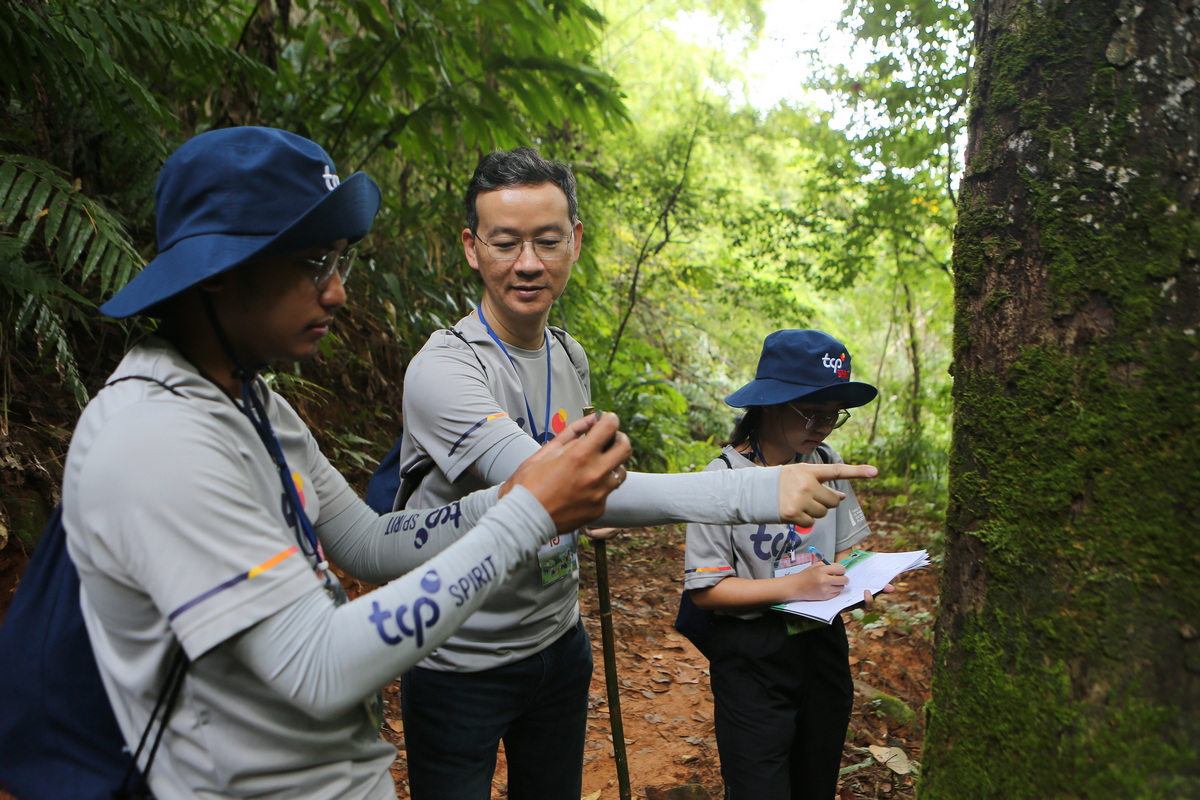 Mr. Saravoot Yoovidhya, Chief Executive Officer of TCP Group, shared an interesting perspective during the trekking activity. He said, “The trekking experience this time is distinctive, as it depicts a more explicit connection between the ecosystem and the concept of the circular economy, allowing us to understand that nature possesses the ability to renew itself; it emerges, flourishes, decomposes, and returns to the world, fostering the creation of a new natural cycle. This understanding can serve as a valuable guide which businesses can incorporate in their operations, encouraging them to design materials that can be circulated while managing resources in their production systems that facilitate reusability. This also aligns with TCP Group’s principle, as we are committed to applying the concept of the circular economy to generate positive impacts while actively working towards achieving the sustainability goals we have set.”
Mr. Saravoot Yoovidhya, Chief Executive Officer of TCP Group, shared an interesting perspective during the trekking activity. He said, “The trekking experience this time is distinctive, as it depicts a more explicit connection between the ecosystem and the concept of the circular economy, allowing us to understand that nature possesses the ability to renew itself; it emerges, flourishes, decomposes, and returns to the world, fostering the creation of a new natural cycle. This understanding can serve as a valuable guide which businesses can incorporate in their operations, encouraging them to design materials that can be circulated while managing resources in their production systems that facilitate reusability. This also aligns with TCP Group’s principle, as we are committed to applying the concept of the circular economy to generate positive impacts while actively working towards achieving the sustainability goals we have set.”
Discovering the power of nature: from ecosystems to the circular economy
Forests can be equated to the Earth’s lungs, serving as ecosystems teeming with astonishing biodiversity. They are the origin of resources providing “ecosystem services,” such as air, water, and the four fundamental necessities for life. Additionally, forests serve as a source of diverse energy resources utilized by humans. Consequently, it is necessary that we collaborate to restore and preserve them.
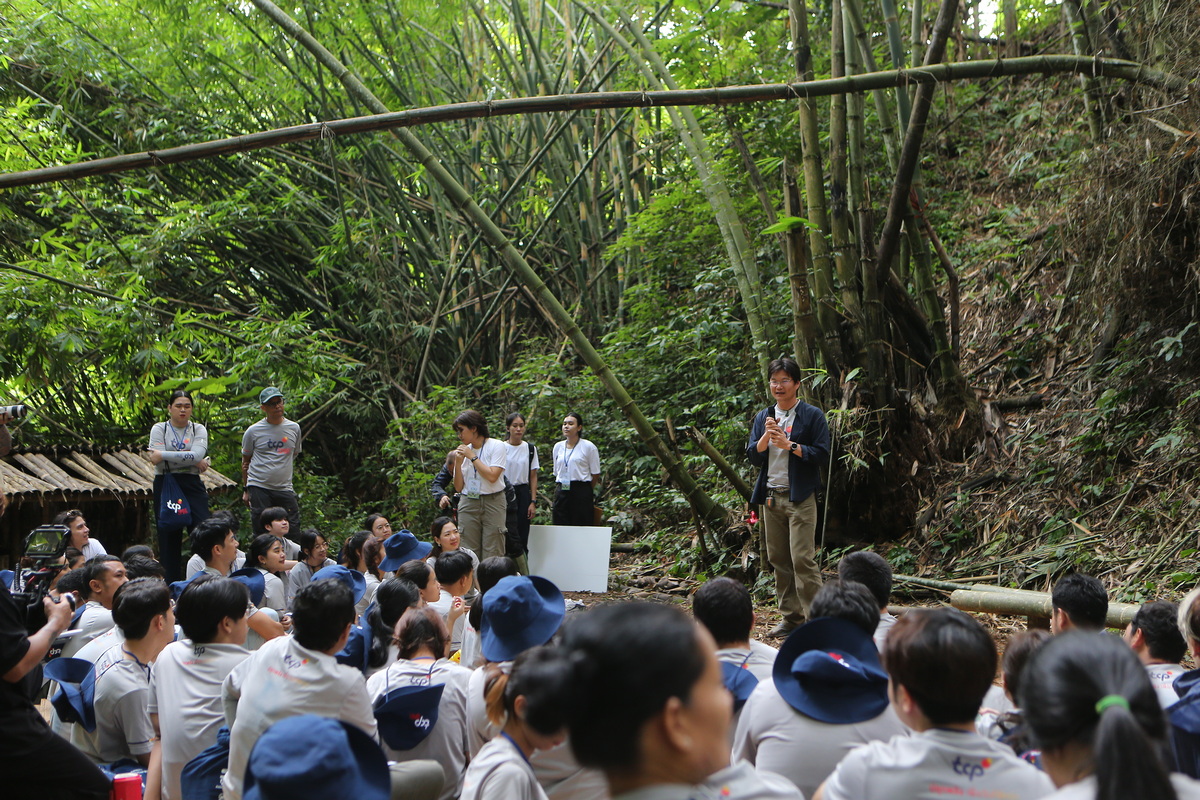
Dr. Petch Manopawitr, a conservation scientist and head teacher at Kana Sed Sarng, emphasized, “The concept of a circular economy is linked to biomimicry, a science that involves studying and emulating nature’s innovations, which have evolved over millions of years and encountered challenges similar to our own. Nature has continuously developed and holds numerous solutions that we can leverage. It’s crucial to remember that we are an integral part of the natural world. Various developmental approaches must maintain natural capital to ensure the survival of businesses and prevent losses.”
Learn about the circular economy through a butterfly diagram
“This year at TCP Spirit, we used a butterfly diagram to help our volunteers gain a deeper understanding of the concept of the circular economy. This diagram helps us visualize the entire waste management journey, from the moment waste is sorted and how to maximize its benefits, to creating a path of zero waste. Additionally, it allows us to understand nature and coexistence, so we can help to conserve and regenerate resources for genuine sustainability,” explained Dr. Petch.
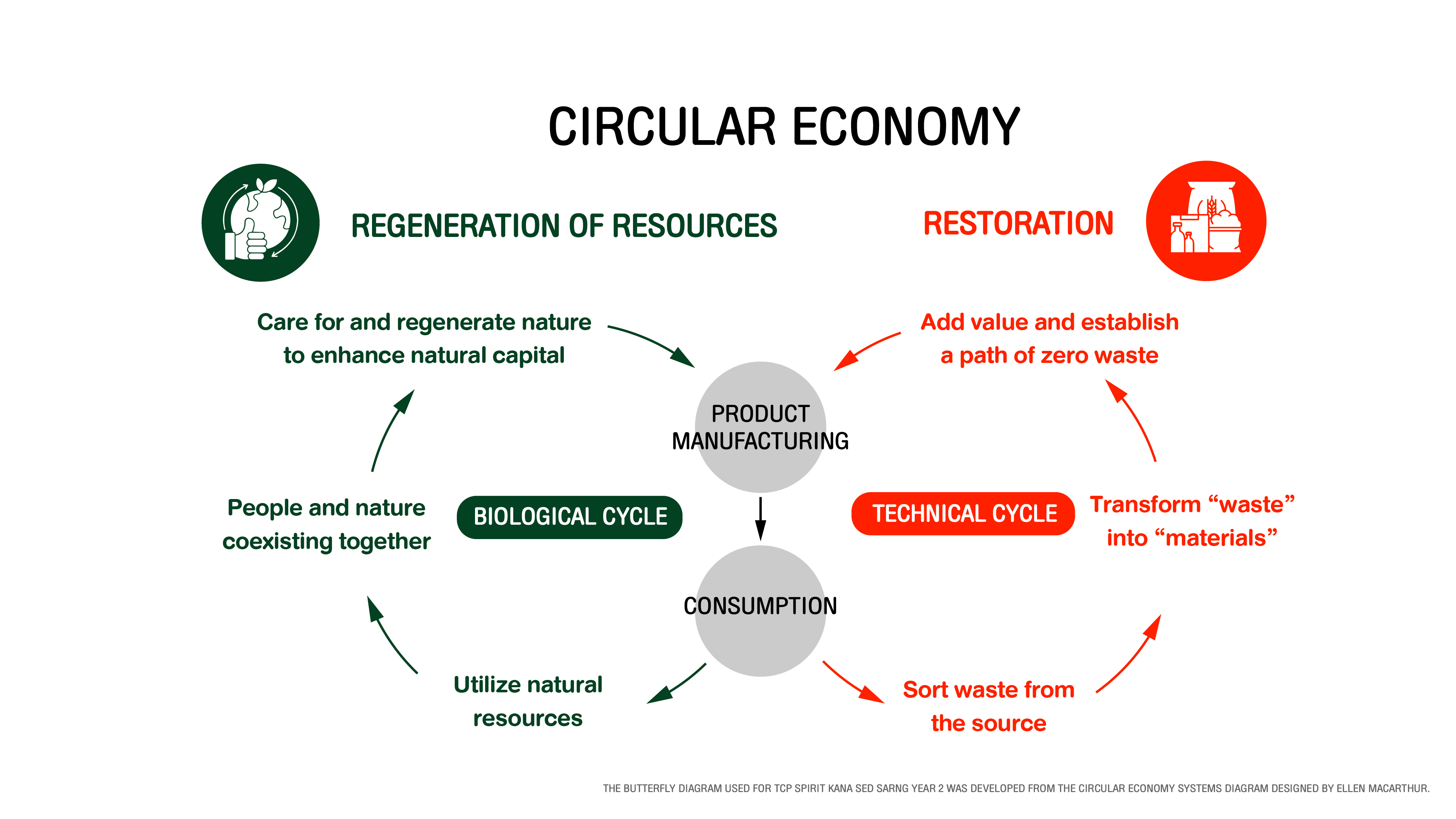
The butterfly diagram, designed by Ellen MacArthur, is used to illustrate a circular economy system. It describes the blueprint for manufacturing processes, services, and business models geared towards fostering resource circulation, waste reduction, and, finally, a zero-waste outcome. The diagram can be divided into two distinct wings: the “biological cycle” (located on the left side of the butterfly) and the “technical cycle” (found on the right side of the butterfly). The biological cycle embodies the return of biodegradable materials to the Earth, facilitating natural regeneration. On the other hand, the technical cycle involves the circulation of non-biodegradable products and materials through various processes like reuse, repair, remanufacturing, and recycling.
- The biological cycle operates with its own recycling processes within ecosystems. For instance, forests provide resources for both humans and wildlife. Fallen fruit serves as fertilizer for the trees, attracting animals that consume the fruit and later excrete it, thereby cycling nutrients back into the soil, nourishing the trees once more. This creates an unending cycle where trees produce crops and continually contribute to the ecosystem without generating waste. However, natural products follow seasonal production patterns, which is why humans must preserve them. We must learn to live in harmony with nature, actively caring for and regenerating it to maintain its integrity. In the TCP Spirit, volunteers collect food scraps to create earthworm fertilizer and explore the forests to gain a deeper understanding of forests for economic use, forests for harvesting and household use providing seasonal products, and conservation zone that require the preservation of specific plants and products. This includes employing natural dyes for fabric, reducing chemicals that can adversely impact downstream ecosystems.
- The technical cycle begins with product consumption, leading to leftover waste. Consequently, it becomes essential to sort this waste at its source. For example, in TCP Spirit activities, leftover molds from ceramic production can be repurposed to restore deteriorated roads, thereby reducing demand for new cement. Similarly, recycling snack wrappers can be leveraged to create new products like coasters and keychains, thus adding value to the materials.
Applying the butterfly diagram and the concept of the circular economy in everyday life and business
We can put the concept of the circular economy into practice by engaging in simple material circulation activities, such as reusing items that are still functional to reduce waste and sorting waste to facilitate proper recycling and management. By adopting these practices, we can minimize waste production and safeguard our natural resources from depletion.
For businesses, it is crucial to determine the role they can execute at each stage of the cycle. This journey may begin with waste reduction efforts or minimizing waste generation and extend all the way to achieving zero waste. This involves caring and efficient circulation of resources to the greatest extent possible. These objectives can be pursued across various aspects of a business, including production processes, services, and office operations. For those seeking guidance on how to initiate this process, TCP Group offers some valuable guidelines:
- The technical cycle begins from upstream, where we aim to design packaging that is 100% recyclable. This allows resources to be perpetually recycled to create new packaging materials.
- The biological cycle: As an organization that relies on water as its primary ingredient in manufacturing products, the TCP Embracing Thailand’s River Basin project was launched to assist in the regeneration of water sources. This initiative aims to replenish both surface and groundwater, returning water to its natural habitat and the community, thereby ensuring its efficient use for an improved quality of life.
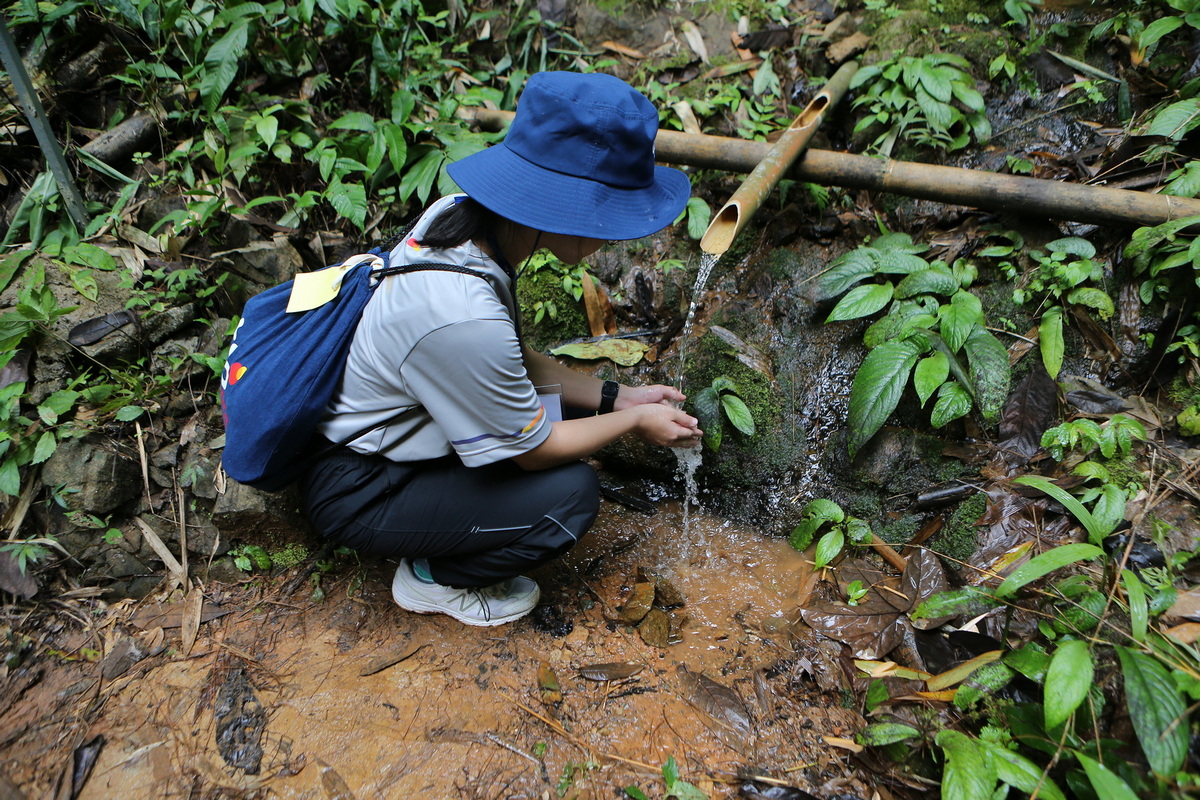
“Today, a new generation of consumers is showing a growing interest in sustainability. This concern is poised to create a positive ripple effect that encourages awareness among us. For instance, when examining packaging or a simple coffee cup, we are prompted to question the materials used in their production. This heightened awareness can then exert some social pressure. As discussions on sustainability gain momentum alongside our increasing knowledge, a powerful force for societal change will be set in motion. As consumers pay greater attention to sustainability, organizations that prioritize this issue will be well-positioned to respond and, in turn, generate profits. Every facet of the business can be involved in the circular economy. We are not in competition with one another, we are striving to evolve as a better version of ourselves,” concluded Mr. Saravoot.


